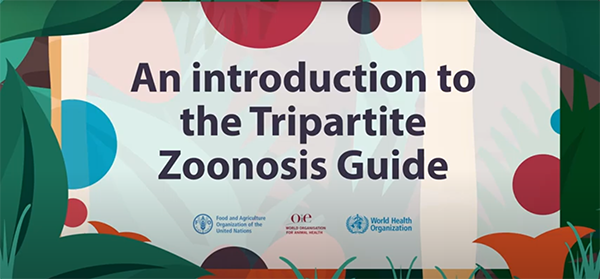
Taking a multisectoral, One Health approach is necessary to address complex health threats at the human-animal-environment interface.
The Tripartite organizations – the Food and Agriculture Organization of the United Nations (FAO), the World Organisation of Animal Health (OIE), and the World Health Organization (WHO), launched the Tripartite Zoonoses Guide (TZG), the summation of a global effort of more than 100 experts coming together from around the world to provide guidance and best practices for addressing zoonotic diseases in countries.
Using country examples shared in the TZG, this training introduces participants to the technical chapters in the Guide while providing practical guidance for strengthening a One Health approach to zoonotic diseases.
Target Audience: Professionals from human, animal or environmental health sectors involved in the implementation of the IHR.
After completing this course you should be able to:
- Understand the purpose of the TZG.
- Recognize the tools that can be used to understand national context and priorities for One Health.
- Explore the seven technical chapters of the TZG.
- Use country examples to inform the application of key principles of the TZG.
- Identify operational tools available to support the use of the TZG at a country level.

In this training, participants will explore the step-by-step process for setting up the JRA, conducting the technical risk assessment, and translating results to risk management options and communication needs.
The JRA OT allows decision-makers to build and implement science-based risk management measures that are aligned between sectors and implemented jointly.
Target Audience: Professionals from human, animal or environmental health sectors involved in the implementation of the IHR.
After completing this course you should be able to:
- Understand the purpose of the JRA and describe the key principles of risk assessment.
- Explore how to set up a JRA at the national or subnational level.
- Describe the important aspects of risk framing that inform JRA.
- Develop appropriate risk assessment questions.
- Navigate the technical steps of a joint risk assessment.
- Use country examples to apply the technical steps of the JRA and create risk management and communication options.